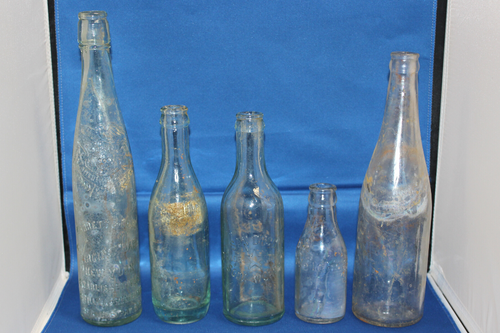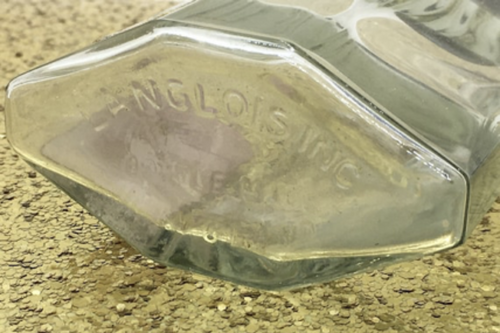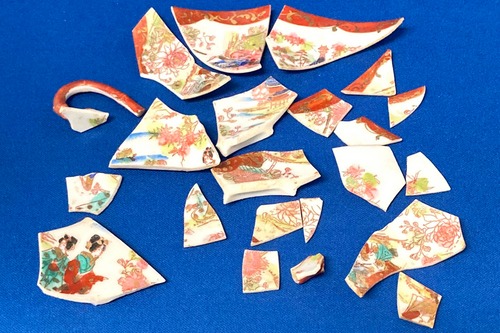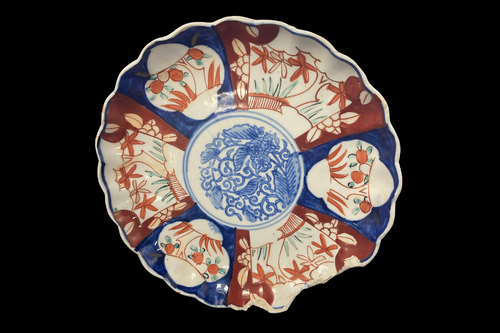
Porcelain Plates
The San Diego Archaeological Center is dedicated to fulfilling the intent of the California Environmental Quality Act (CEQA) to preserve examples of the major periods of California history and to offset the impact of land development pressures on cultural resources. The Center is committed to the preservation of our archaeological legacy in San Diego County and serves as a curation technology resource to federal, state and local government and private companies. We do not typically accept items from private donors due to lack of professional archaeology methods and standards, resulting in loss of context and provenience (or history and origin). On rare occasions, we do make exceptions.
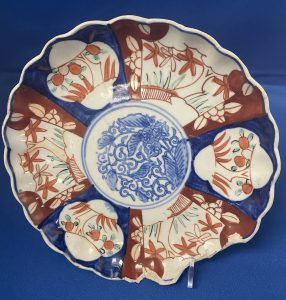 Last month, the SDAC accepted a donation of two historic porcelain plates from a private donor. These plates were donated with little to no information regarding their origin. The donor believed that they were Chinese and at least 100 years old. The Center accepted the donation into the Teaching Collection since the plates are intact and could be useful for research and teaching opportunities.
Last month, the SDAC accepted a donation of two historic porcelain plates from a private donor. These plates were donated with little to no information regarding their origin. The donor believed that they were Chinese and at least 100 years old. The Center accepted the donation into the Teaching Collection since the plates are intact and could be useful for research and teaching opportunities.
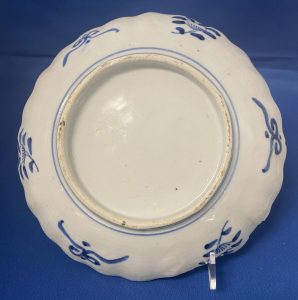 After some research, it appears these are actually a pair of Japanese plates, and they date back to the Meiji tradition or era of 1868-1912. This era was a time of rapid modernization for Japan as Emperor Meiji embraced the modern and industrialized ideas of Western cultures regarding technologies, science, philosophy, and political ideologies.
After some research, it appears these are actually a pair of Japanese plates, and they date back to the Meiji tradition or era of 1868-1912. This era was a time of rapid modernization for Japan as Emperor Meiji embraced the modern and industrialized ideas of Western cultures regarding technologies, science, philosophy, and political ideologies.
These plates are of the Imari ware design. Imari is the Western term for this type of porcelain, and points to the bright color and style. When Japan began to trade with Western countries during the Meiji period, porcelain production was taking place in Arita so this type of porcelain is also called Arita ware. The port in which these products were exported was called Imari.
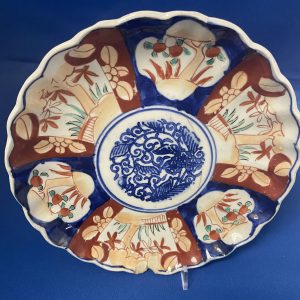 These two plates are difficult to date, as many early Japanese ceramic was unmarked. American law did require trade items to be marked with their country of origin after 1891, so this may mean they were made prior to that date. However, they also could be replicas that were manufactured in the states.
These two plates are difficult to date, as many early Japanese ceramic was unmarked. American law did require trade items to be marked with their country of origin after 1891, so this may mean they were made prior to that date. However, they also could be replicas that were manufactured in the states.
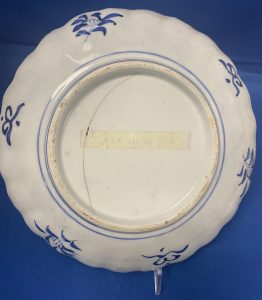 The typical Imari ware was decorated with blue, red, gold and black hand painted designs. It was so popular that other cultures replicated and produced it as well.
The typical Imari ware was decorated with blue, red, gold and black hand painted designs. It was so popular that other cultures replicated and produced it as well.
Learn more about the Japanese Imari or Arita style porcelain in this story curated by the Tachibana Museum.
By Jessica McPheters, Collections Manager
Resources
Nussbaum, Louis-Frédéric. (2005). “Meiji” in Japan encyclopedia, p. 624, p. 624, at Google Books; n.b., Louis-Frédéric is pseudonym of Louis-Frédéric Nussbaum, see Deutsche Nationalbibliothek Authority File.
Arita Porcelain in the Meiji Period: https://artsandculture.google.com/story/arita-porcelain-in-the-meiji-period-tachibana-museum/6QXBaaO0xjz-JQ?hl=en
Donations to the SDAC
Please note: We do not accept unsolicited donations without a donation form.
Due to the high volume of donation offers the Center receives, we are unable to accept unsolicited objects, images, books, or documents unless you first submit a completed Donation Form. Once you have filled out the donation form, please email it to collections@sandiegoarchaeology.org.
Please do not send the original materials you wish to donate to the San Diego Archaeological Center until you have been contacted by Center staff.
If you are unable to complete the online Offer of Donation Form, please call the San Diego Archaeological Center at 760-291-0370 and request that a copy be mailed to you. Please try to include a photograph and measurements of the objects, images, or documents with your form. You may mail back your completed form to the address below.
Once the form is received, your proposed donation will be considered, and a staff member will contact you within four weeks. If we are interested in accepting your donation, SDAC staff will work with you to receive your donation. Following acceptance, you will be requested to sign a Deed of Gift to document your transfer of the items to the Center. If you have questions, concerns, or other issues you wish to discuss, please contact us at collections@sandiegoarchaeology.org.


